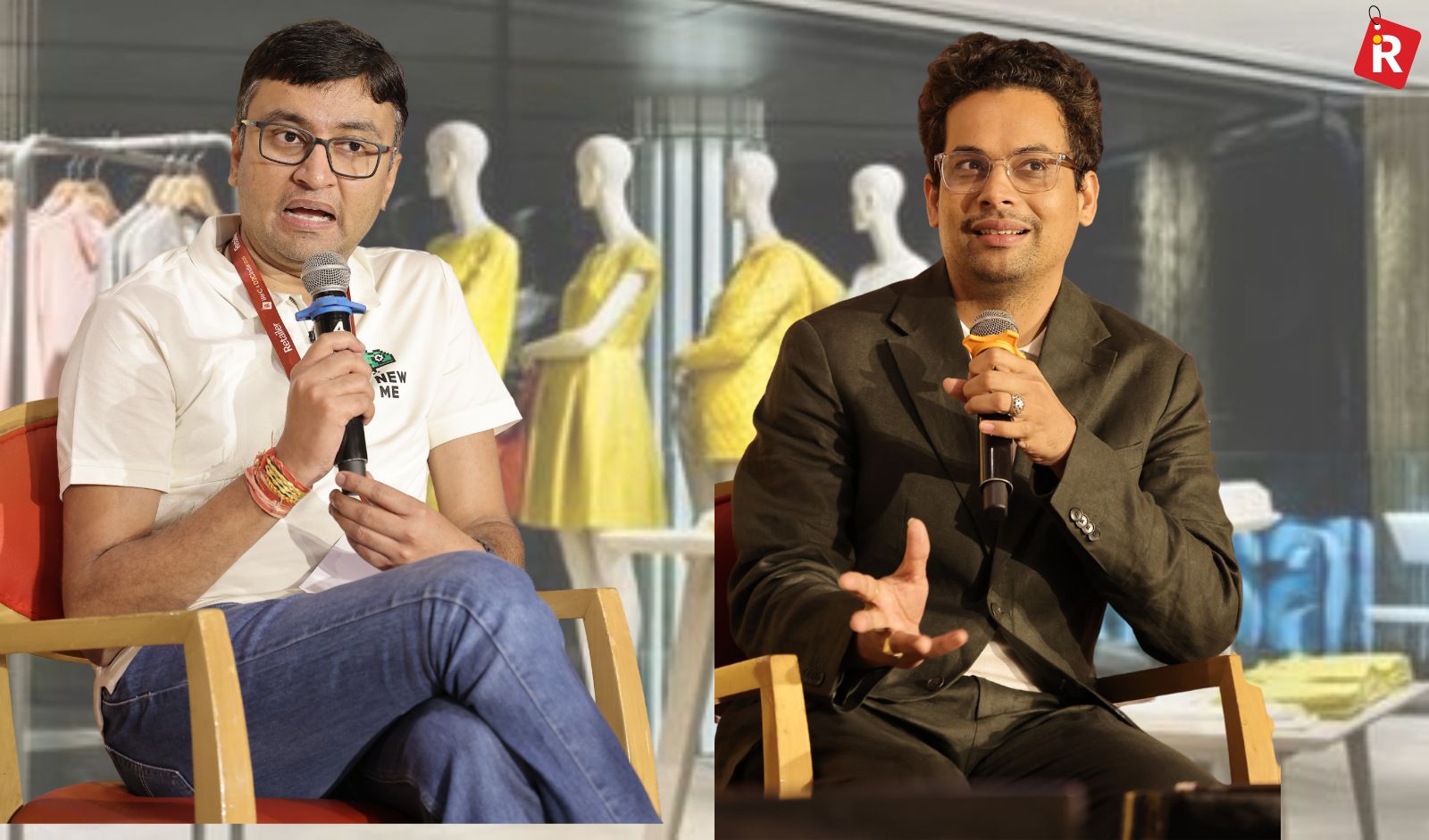Masstige Mania: How Gen Z Is Ditching Luxury Labels for Trend-First Fashion in India

Today’s youth aren’t chasing logos — they’re chasing likes. With Instagram as their style compass and speed as their currency, a new wave of masstige fashion brands like Urbanic and NewMe are rewriting the rulebook.
By Nandini Banerjee, Managing Editor
May 07, 2025 / 36 MIN READ
Once upon a time, luxury labels ruled the fashion hierarchy with their iron-clad exclusivity and untouchable price tags. Today, a silent revolution has taken over the Indian market—one that’s rewriting every old-school fashion playbook. Welcome to the era of masstige—where mass meets prestige, and where Gen Z wants trends, not tags.
No, they don’t care about logo-heavy outfits or five-digit price tags. Gen Z is shopping with their eyes glued to Instagram, not Paris runways. They want what's hot and they want it now. Think affordable, aspirational, and absolutely viral—that’s the masstige model.
At the heart of this revolution are brands like Urbanic and NewMe, who are not just playing the game—they’re rewriting the rules. At the recently concluded IREC X D2C Summit 2025, Rahul Dayama, Founding Partner, Urbanic, and Sumit Jasoria, Co-Founder and CEO, NewMe, break down why fashion’s new frontier looks more like a TikTok trend than a couture campaign.
From Catwalks to Clicks: The Birth of Masstige
“The culture hasn’t changed,” says Rahul Dayama of Urbanic. “It’s the access that has. Luxury fashion was always aspirational, but we were never able to reach those consumers who admired it from afar. Today, we tap into those very aspirations by meeting them halfway—through social media.”
Take Urbanic’s viral “silk scarf top” as an example. “Four years ago, we noticed people on TikTok and Instagram tying silk scarves into tops—it was all over. So we designed an actual silk scarf top based on that trend. I was in Goa a week after we launched it, and I saw at least three girls wearing it—each styled in their own way. That’s how fast and powerful this model is.”
In a world where content is currency and everyone’s a creator, brands no longer chase seasons—they chase scrolls. “We don’t look at Paris or Milan anymore,” he adds. “We look at TikTok, Instagram reels, Pinterest boards, and what’s happening in real time.”
The Algorithm Behind the Trend Machine
Sumit Jasoria of NewMe doesn’t just chase trends. He manufactures them—at a pace even fast fashion giants would find dizzying.
“At NewMe,” he explains, “we don’t just ride the wave—we predict it. We launch new styles every week. We don’t do four seasonal drops a year like legacy brands. That model is extinct.”
How?
“It’s all in the backend. We built NewMe with the mindset of disrupting the supply chain. Our tech stack monitors digital behavior—search terms, social media shares, influencer posts, and even color palettes trending globally. Platforms like Pinterest, Instagram and even Google Trends are our mood boards.”
Unlike traditional fashion brands that wait for the runways to dictate trends, NewMe reads culture in real-time.
“I’d argue that fashion weeks are no longer the pulse of fashion. Stylists, celebrities, and even meme culture shape trends today. If Pantone says lavender is the Color of the Year, and it’s all over your feed, our platform picks it up within hours.”
Fashion Like Groceries: The ‘Expiry Date’ Mentality
You read that right. Jasoria likens fashion to fruits and vegetables.
“Fashion today is like grocery,” he says with a straight face. “It has an expiry date. People don’t want to wear something that’s going to feel ‘old’ next month. Why should they? They’re creating content, attending events, capturing selfies—they need fresh looks constantly.”
In just over two years, NewMe has launched over 40,000 unique styles. And how many are still available? “Just four,” Sumit laughs. “That’s how rapid the cycle is. The rest are archived because they’ve served their purpose. People are not looking for closet staples anymore—they’re looking for content pieces.”
Why Gen Z Doesn’t Care About Logos
Aesthetics matter. Flaunt value matters. But logo value? Not so much.
“Gen Z isn’t driven by brand names the way millennials were,” explains Rahul. “They care about trending designs, aesthetic expression, and Instagram validation. That’s their currency.”
Both brands agree that masstige is not about cheap knockoffs—it’s about democratizing trends and turning fashion into a social experience.
“When a young woman posts a selfie and someone comments ‘OMG where’s that dress from?’, she feels validated,” Sumit adds. “But if that dress isn’t giving her that attention, she won’t wear it again. That’s why freshness wins. Not logos.”
But Wait—Do Brands Still Matter?
Yes—but not in the way you think.
“People often confuse masstige with value fashion,” says Sumit. “They’re not the same. Tata Nano was a great product, but it flopped because it lacked aspiration. Aspirational value is critical. You can’t build a masstige brand without it.”
At NewMe, he adds, fashion is defined by three pillars: Aspirational (A), Expressive (E), and Validated (V). “If a dress doesn’t hit all three—if it doesn’t look aspirational, express your identity, and win compliments—it’s not fashion anymore. It’s just clothing.”
Rahul agrees. “Branding is still core. Being fast and trendy is our product, but branding is how we communicate it. It’s how we build trust. I always say, coffee is a product—but Starbucks is a brand.”
And here's a key insight: if your customer hides the brand name when someone asks, you’re not a brand. You’re just a label. “We want people to say, ‘I’m wearing NewMe’ or ‘this is from Urbanic’ with pride,” Sumit emphasizes. “That flaunt factor? That’s where branding lives.”
Who’s Buying It: Tier I, II, or III?
Urbanic’s audience is largely Tier I and Tier II, says Rahul.
“Our designs are made for people who go out, attend events, and go clubbing, visit cafés. These are lifestyle-driven customers. Tier II cities have exploded in that regard—people are going out more, dining out more, and wanting to look good while doing it.”
But NewMe’s reach is broader—and growing fast.
“While Tier I and Tier II are still our strongest markets,” Sumit says, “we’re seeing massive potential in Tier III. When we opened a store in Indore, we had customers driving down from nearby towns like Bhopal just to experience the store. They planned their entire day around it. That’s not just shopping—that’s aspiration in motion.”
According to Sumit, Tier III is not just catching up—it’s leapfrogging. “The aspiration is stronger. And thanks to social media, the exposure is real-time. A girl in Raipur is seeing the same content as a girl in Delhi—and she wants the same outfit today. That’s where masstige wins.”
Social Media: The New Fashion Bible
Let’s face it—if it’s not on Instagram, it didn’t happen.
“Social media is the pulse,” says Rahul. “We don’t wait for WGSN reports. We track what creators are wearing, what’s in reels, what’s blowing up on TikTok. Our team sits on trend dashboards every single day.”
This is where traditional brands fall short. “Most legacy brands are still stuck in quarterly planning. By the time their collections hit shelves, the trend is already dead online.”
At Urbanic and NewMe, the average turnaround from idea to live product? Days, not months.
The Future: Trends Over Tags?
So, are we moving into a post-brand world? One where only trends, pricing, and social communities matter?
“Not quite,” says Sumit. “But brands have to evolve. They need to become part of culture, not just sit on a pedestal.”
The era of exclusivity is over. What matters now is belonging—being part of something that feels current, expressive, and seen.
“We’re not building fashion brands anymore,” Rahul adds. “We’re building trend engines. That’s the new business model.”
The Secret Weapon: Speed and Supply Chain
At the heart of both NewMe and Urbanic’s success lies one unsung hero: the supply chain.
“You can’t do this kind of fashion if you’re not agile,” says Sumit. “You can’t drop 40,000 styles in two years unless your backend is on fire. Our factories, logistics, tech, everything is optimized for speed.”
Rahul echoes this: “People talk about content and trends, but behind the scenes, it's all about execution. If you can't get that top to the customer within a week of spotting the trend, you've lost the moment.”
Final Stitch: Why Masstige Is the Future of Indian Fashion
Forget heritage, forget runway shows. The new luxury is speed, expression, and virality. And in India, masstige brands like Urbanic and NewMe have cracked the code.
They’re not just selling clothes. They’re selling culture, confidence, and clicks.
“Fashion is no longer about what the elite wear,” says Sumit. “It’s about what everyone wants to wear—today, right now, before it fades.”
Once upon a time, luxury labels ruled the fashion hierarchy with their iron-clad exclusivity and untouchable price tags. Today, a silent revolution has taken over the Indian market—one that’s rewriting every old-school fashion playbook. Welcome to the era of masstige—where mass meets prestige, and where Gen Z wants trends, not tags.
No, they don’t care about logo-heavy outfits or five-digit price tags. Gen Z is shopping with their eyes glued to Instagram, not Paris runways. They want what's hot and they want it now. Think affordable, aspirational, and absolutely viral—that’s the masstige model.
Related Stories
Once considered a quiet corner of the apparel industry, India’s innerwear market has emerged as one of its most vibrant growth engines. What was traditionally a necessity-driven category has now…
- By Vaishnavi Gupta
- |
- 8 Min Read
In a landmark move that could reshape India’s Rs 16 lakh crore dairy industry, the 56th GST Council has approved a rationalization of GST rates on milk and milk products — a decision that has already…
- By Vaishnavi Gupta
- |
- 7 Min Read
Snacking in India is getting a healthy makeover. As more people choose mindful eating and nutritious options, homegrown brands are changing the way we think about snacks. From nuts and trail mixes to…
- By Richa Fulara
- |
- 10 Min Read




